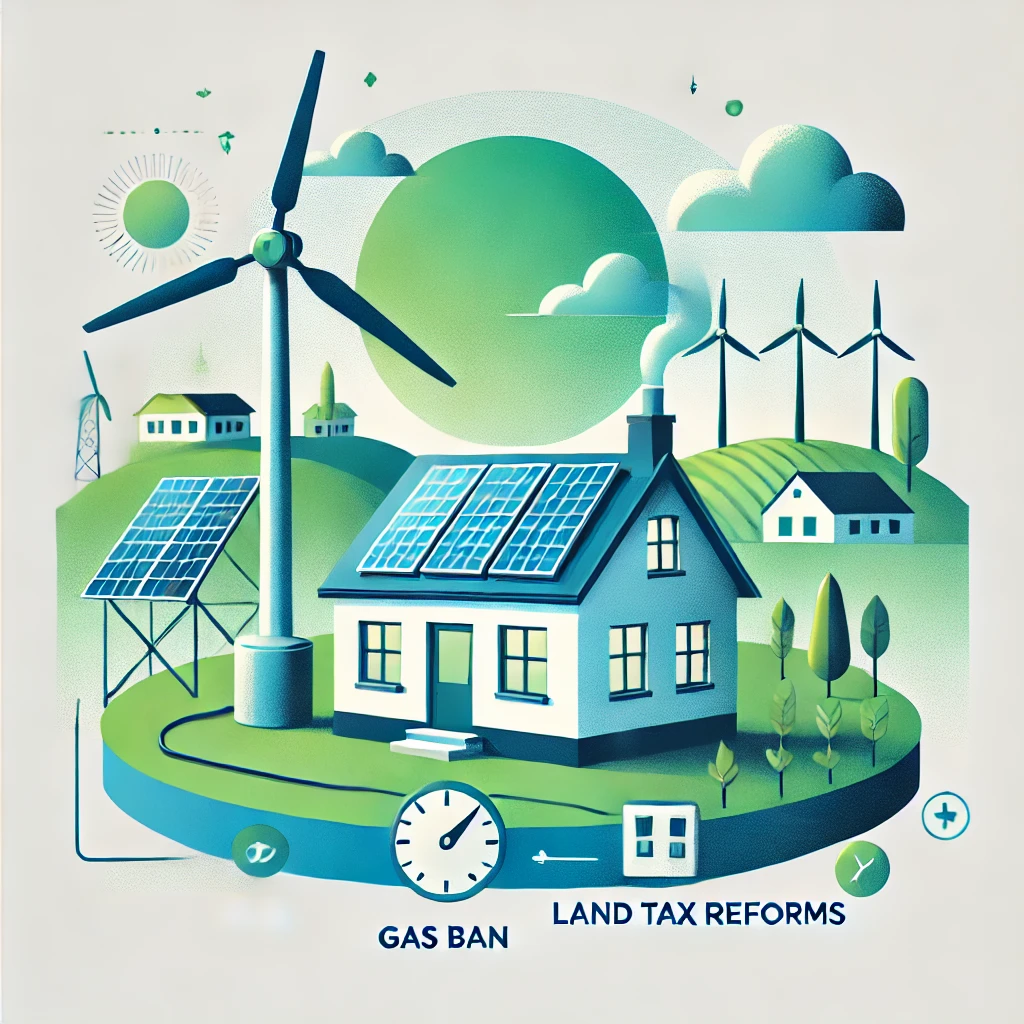Gas Ban in New Homes
Starting January 1, 2024, new residential developments in Victoria are prohibited from connecting to the gas network. This policy mandates that new homes, apartments, and residential subdivisions rely solely on electric energy. The ban applies to planning permit applications submitted on or after this date. The initiative aims to reduce fossil fuel consumption, aligning with Victoria’s goal of achieving net zero emissions by 2045.
Currently, approximately 80% of Victorian homes use gas, contributing significantly to the state’s emissions. Transitioning to all-electric homes is expected to lower energy costs for consumers and support environmental objectives.
References:
Victoria Planning,
Utility Magazine
Land Tax Reforms
Victoria is introducing temporary land tax surcharges over the next decade, effective from the 2024 tax year. The surcharges are structured as follows:
- $500 surcharge for landholdings valued between $50,000 and $100,000.
- $975 surcharge for land valued between $100,000 and $300,000.
- For land over $300,000: $975 plus 0.1% of the taxable value.
Family homes remain exempt from land tax. Additionally, the government is expanding the Vacant Residential Land Tax (VRLT) to cover all of Victoria, beyond the previous focus on inner and middle Melbourne. This tax applies to residential properties that are vacant for more than six months in the preceding calendar year. From January 1, 2025, a progressive VRLT rate will be implemented:
- 1% of the capital improved value (CIV) for the first year the land is liable.
- 2% for the second consecutive year.
- 3% for the third consecutive year.
These measures aim to increase housing availability by discouraging property vacancies and encouraging development.
References:
State Revenue Office Victoria,
SRO FAQs
Implications for Homeowners and Developers
The gas connection ban requires builders and developers to design homes with electric appliances and heating systems, potentially increasing initial construction costs but offering long-term savings and environmental benefits. The land tax surcharges and expanded VRLT are designed to incentivize property utilization and development, addressing housing shortages and affordability issues.
Property owners should assess their holdings to understand the financial implications and explore opportunities to develop or lease vacant properties to mitigate tax liabilities. These policy changes reflect Victoria’s commitment to environmental sustainability and housing accessibility, with significant impacts anticipated for the real estate market and energy consumption patterns in the state.
Discover more from Kango Anywhere
Subscribe to get the latest posts sent to your email.




